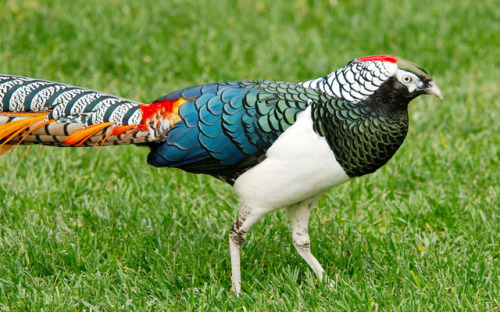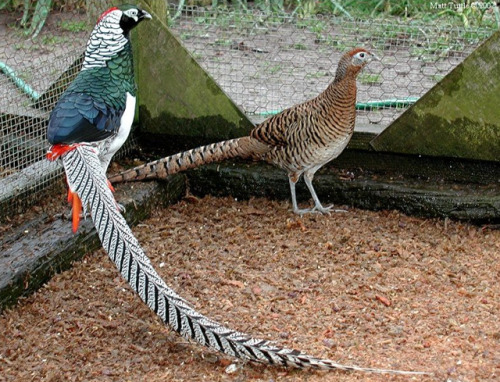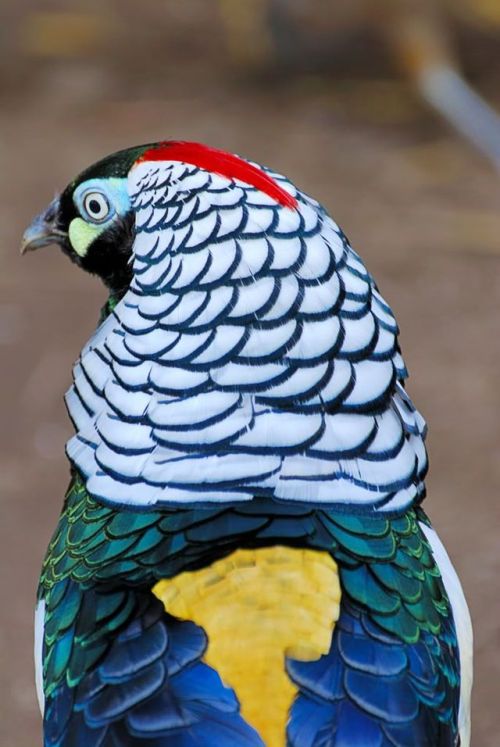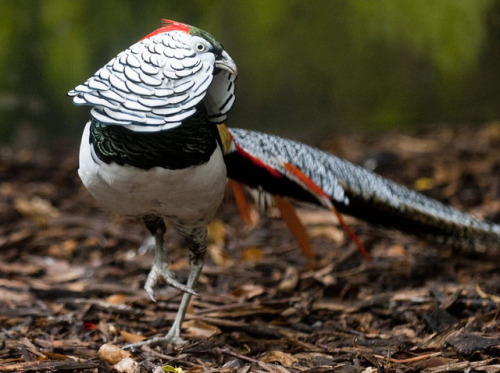#chrysolophus amherstiae
TheLady Amherst’s pheasant is a species native to China and Myanmar, although there was a feral population in England until 2015, which is now believed to be extinct. The male is known for its brilliant plumage, the black and white “cape” of which can be spread in display (last three photos). The female of the species is a much more subdued brown (shown in photo 5). The Lady Amherst’s pheasant is closely related to the golden pheasant. (xxxxxx)
Post link










